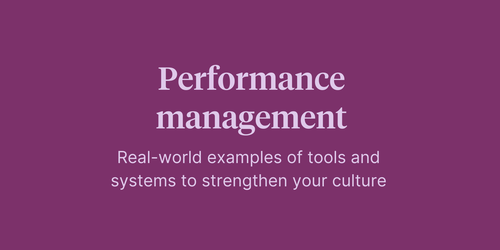
Article
Written by

Senior Director of People Operations and Strategic Programs, Culture Amp

Senior Content Marketing Manager, Culture Amp
90% of Fortune 500 companies have employee resource groups (ERGs) as part of their DEI strategy. Yet, only about 5% of companies actually compensate ERG members for the very tangible benefits their work brings to the organization.
From community building to culture work, ERG members pour hours into recruiting members, hosting meetings, designing programming, and more. They do all this for free (ERGs are typically considered “volunteer-run”) and often without recognition, balancing their day-to-day responsibilities with the needs of the employee resource groups while also navigating microaggressions at work. As a result, many ERG members – especially leaders – feel burned out by the additional work ERGs involve.
This is ironic because employee resource groups are designed to benefit members of historically marginalized groups, not burden them with thankless (and unpaid) additional work. Moreover, the majority of labor is falling into the laps of BIPOC individuals and women of color (WOC), who historically perform more invisible labor and are paid less than their White and/or male peers. In that way, ERGs can perpetuate the historical practice of undervaluing, or even dismissing, the skills and expertise of underrepresented and marginalized groups of people.
If you want to put some muscle behind your “commitment to DEI,” compensating your ERG leads is one material way to deliver on your promises. However, as paying ERG leads is a relatively new practice, it can be challenging to implement financially, legally, and from a management standpoint.
In this article, we share key questions and areas of focus to help you answer the myriad questions that come with building an equitable compensation scheme for ERG leads.
Deciding to pay your ERG leaders is an important step towards creating a more diverse, inclusive, and equitable world of work. In doing so, you will join organizations like Twitter, LinkedIn, Autodesk, and Culture Amp, which have stepped up and started paying their ERG leaders over the last year.
If you’re reading this article, it’s likely that you’re interested in creating a compensation model for your ERG leaders and board members. Before diving too deep, it’s important to understand that deciding to pay ERG leads is easier than actually implementing the payments (the logistics can get complicated, but that’s no reason not to do it). There’s a lot of financial and legal red tape involved, and not much precedent to follow. Preparing yourself for this potentially slow process will help you fend off any potential frustration or “diversity fatigue.”
Based on our experience implementing an ERG compensation model at Culture Amp, we’ve compiled a list of key questions to ask and answer. Take these with you when you meet with your collaborators – we promise, this “cheat sheet” will help the process run more smoothly.
Work with your stakeholders to discuss and come to an agreement on these key questions. Your answers to these ten questions will become the framework of your ERG lead compensation model.
Are you ready to recognize ERG leaders for the valuable work they do for your organization? We hope the above cheat sheet of questions will make it possible for more organizations to turn their commitment to DEI into concrete action.
Employee resource groups help promote a sense of belonging and social connection for folks from marginalized communities. They’re communities where internal leaders emerge and provide invaluable guidance to senior leadership on DEI initiatives. When done well, ERGs cultivate opportunities for growth and leadership development. They boost retention through inclusion – which is particularly valuable during the Great Resignation. And at the heart of ERGs are the hardworking leaders who drive the initiatives that bring these benefits to life, and whose valuable work deserves to be rewarded.
